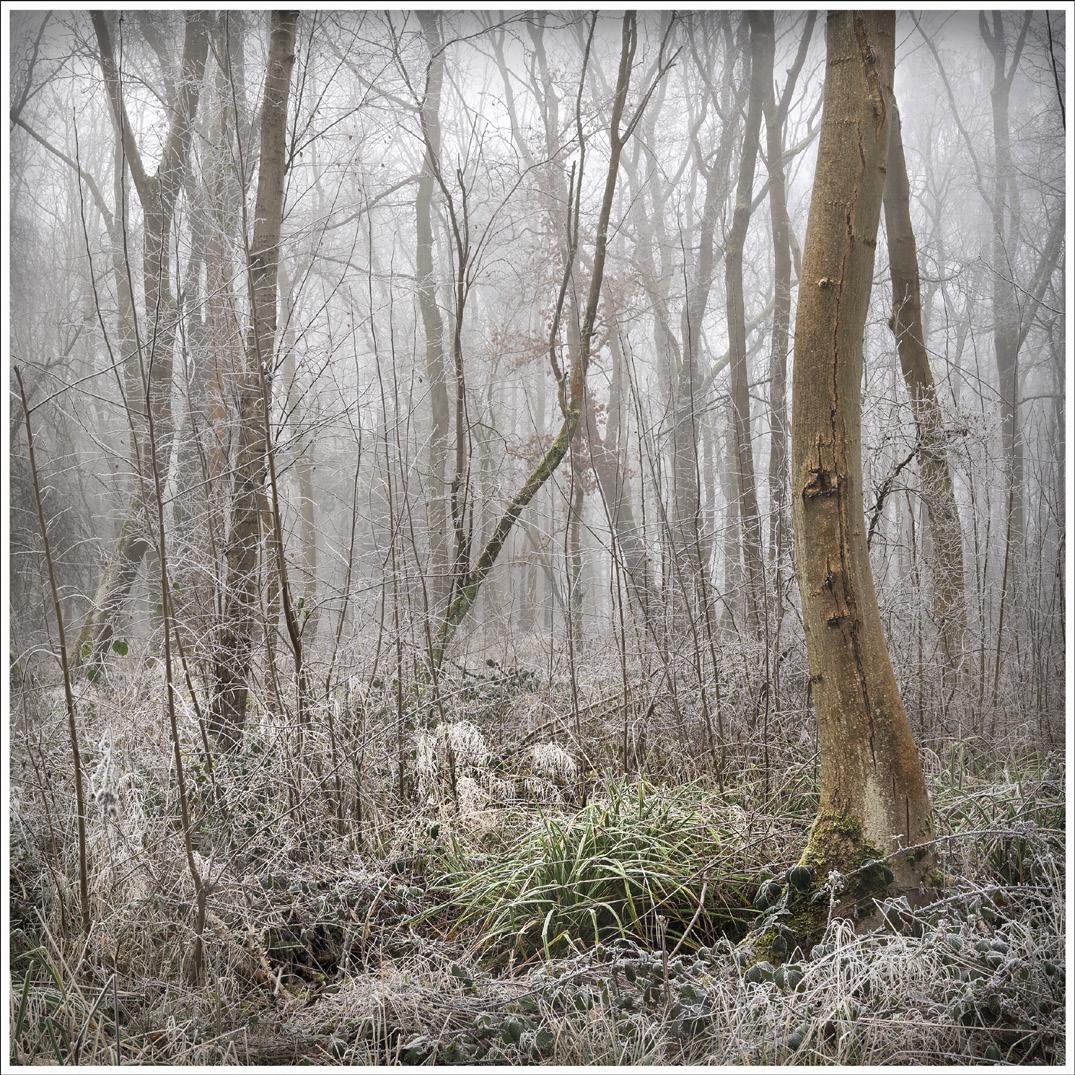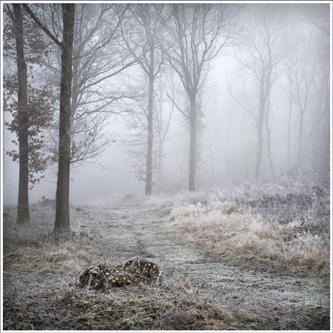
9 minute read
Landscape Distinction - Jayne Winter FRPS
The editor of the RPS Landscape Magazine had the pleasure of posing a few questions to Jayne Winter FRPS about her recent distinction success. Hopefully, some of the answers Jayne gives will help current group members who are considering taking the next step on the distinctions ladder.
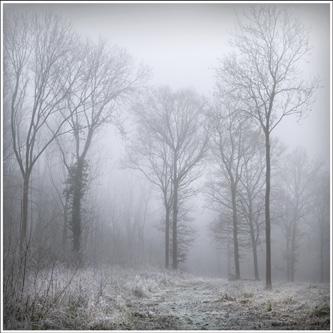
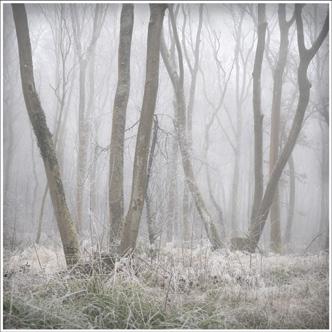
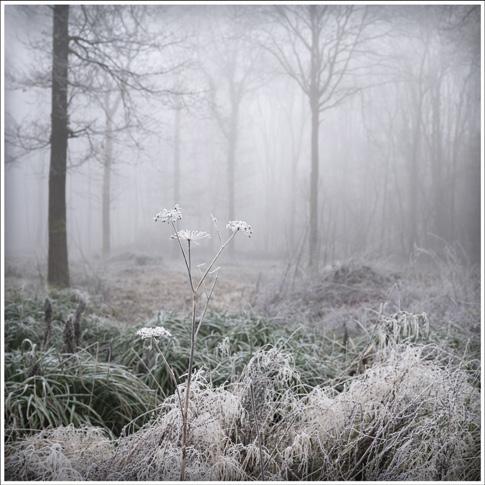
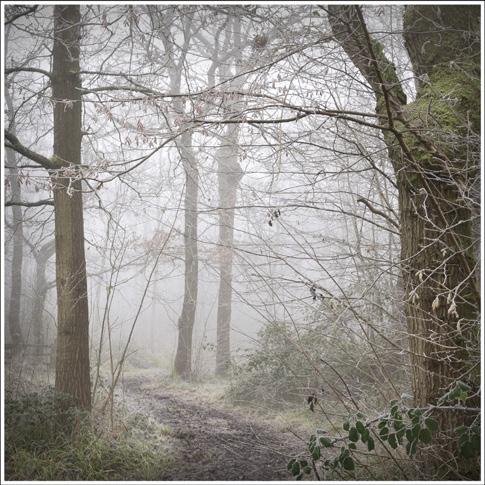
Photography has been my passion for many years, starting in film days when my dad bought me a second-hand Pentax Spotmatic from the first Jessops store in Leicester. I moved on to Canon AE1 Programme SLRs and later a Nikon F100, before going digital with a Nikon D50 in 2006. I currently use a Nikon D850 and a Z6 with a variety of lenses. I also have an infrared-converted Nikon D90. I’ve been a member of various camera clubs during that time: I am currently Competition Secretary of Kempsey Camera Club and am also a member of Worcestershire Camera Club. Until recently, I ran my own High Street business for nearly 20 years; a bookshop with gallery wall space, which allowed me to successfully sell prints and greetings cards of the local area, as well as some of my Fine Art work. Post-Covid, I now sell online only. My main photographic interest is landscape but I also enjoy flower and macro work, creative, black and white and infrared photography. My favourite landscape locations are the Highlands and Islands of the West coast of Scotland, especially during winter when the conditions are often challenging but very rewarding.
Ed: When you considered completing a distinction that you have thought about for a while, how important would you say it was to have an interest / passion about the landscape being photographed?
I think having an affinity to my local woodland helped enormously. I regularly visit with my camera during the winter, spring and autumn and know the paths and areas well. It takes on completely different personalities during these seasons. To me it feels a very intimate wood and has wonderful displays of bluebells in the spring and vibrant colours in the autumn. If you are lucky, a chance sighting of roe deer adds to the enchantment, and there is always an abundance of bird life. The local council have an area of land very close to the perimeter of part of this woodland which they are keen to develop for new housing and the local community petitioned not too long ago to try to prevent this. So far it appears to be on hold. This was another reason why I wanted to try and capture the delicate and peaceful nature of this woodland.
Ed: How long have you been considering applying for a Fellowship?
I gained my Associateship in 2008 with a panel of creative macro flower prints but didn’t consider the Fellowship route until many years later. I suppose I first started to think about it around 2016 and I had a few ideas which I was pursuing using ICM. I built up quite a body of work over the next couple of years but, somehow, I didn’t feel it was getting there. I also created a collection of powerline images which had been another idea but, again, couldn’t quite see the end result. It was only during lockdown in November 2020 that the possibility of creating a panel of work in my local woodland occurred to me.
Ed: Your chosen location of Tiddesley Wood; can you explain the reasons why this particular choice?
I suppose the seeds were sown after I had seen a presentation by another FRPS member who explained he had gained his Associateship by visiting his local pool and was able to access it whenever he needed, giving him the flexibility of being able to go back again and again to perfect his panel. I had a ‘lightbulb’ moment. Perhaps I could work on a similar project in the wood that has provided me with so much photographic inspiration over the years?
Ed: The submission of 21 prints, “taken on frosty winter days between November 2020 and February 2021”; how difficult was it to find the uniformity required within the qualification?
It was quite difficult. I was using two cameras, a Nikon Z6 with a 24-70mm zoom and a D850 with a 70-200mm zoom, shooting in RAW, but the results from each camera were subtly different. With the whole panel needing to have uniformity, work was needed in post processing to achieve this. The light levels were changing as the season went on; for example, during November, even when there were frosts and fog, there were still traces of the warmth of autumn in the remaining leaves, whereas later in January, the woodland was much more barren. Then approaching late February, as the sun moved round, I was aware that the tones were warming up, even on misty mornings.
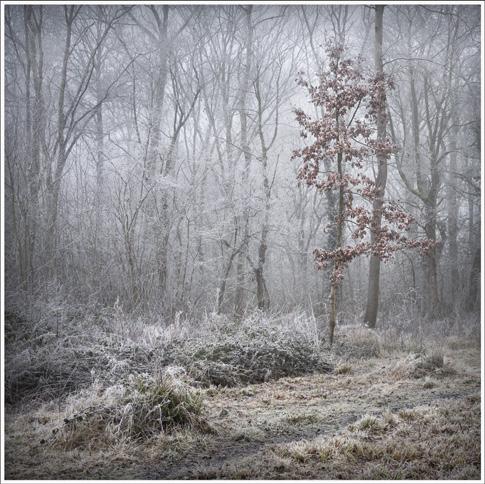
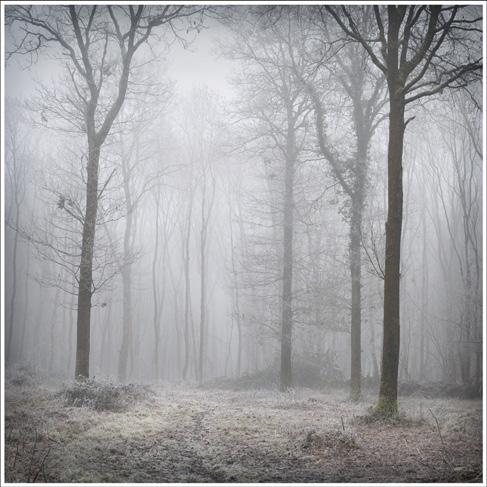
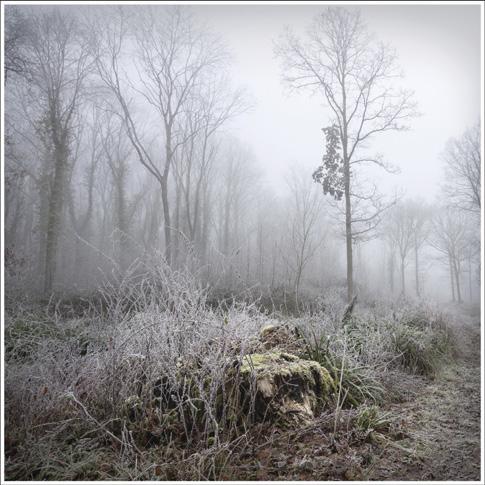
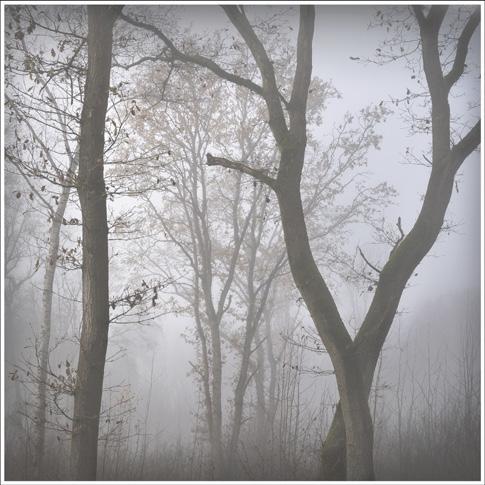
Ed: The prints that were submitted; were they printed by yourself or by another source?
I print all my own work. I see this as the most satisfying part of the whole process; choosing which paper to use to enhance the subject, the print size, the colour and size of the mounts. As I mention in my introduction, as a result of owning my own business, I have two A2 printers, an Epson 3880 and P800. I use the 3880 for matte work and the P800 for everything else. I used Permajet Portrait White for my panel, which is a lovely white fine art paper with a very subtle texture. The square prints were double mounted in a soft white smooth mount. I consider that having total control over the printing process is a prerequisite to a successful print panel.
Ed: Did you have any significant problems/ experiences while you were working on this project?
I think the main issues were relating to the weather. Because I wanted to portray the woodland in the frost and foggy conditions of the winter months, I had to get out (usually very early in the mornings) whenever these conditions were right, which this last winter were few and far between. Therefore, part of my pre-planning was to work out the ‘design’ of the shots that I needed before setting out, given these limited opportunities.
Ed: How important do you think your Statement of Intent was in the judging process and how long did it take to write?
The Statement of Intent was vital. I wanted to convey the feelings I felt when walking through the wood on a cold winter’s morning and this was particularly poignant during the pandemic, as I was able to use it as a kind of escape from the months of lockdown and restrictions we had all been experiencing for so long.
I wanted the viewer (or the panel of assessors in this case) to be able to appreciate the peaceful calm I was feeling when in the wood and how the winter frosts and mists transformed it into a place of beauty. The challenge then was to capture these feelings and moods in my photographs.
I wrote the statement very early on, as the germ of the idea developed. My panel grew out of my words; it really helped focus my work and required only slight tweaking in the latter stages.
Ed: The panel submitted contains 21 images. How did you go about firstly selecting the images and then arranging them?
Having been a member of various camera clubs for many years, viewing numerous presentations during that time, together with my Associateship experience, I had a good idea of the sort of layout that was required. I knew the importance of the use of balance, structure, composition, tones, style and variety, so I began with a basic arrangement of images and then continued to refine and replace as I acquired more. I had decided I was going to use a square format to keep the panel uniform in layout and I also knew the type of shot I wanted as the ‘bookends’ for each row. I printed out 8cm square thumbnails of all the potential images and spent ages over the weeks laying them out, swapping them around, removing ones that didn’t work etc. Having got a basic panel together, I booked on an Advisory Day in February just to establish whether I was on the right track. The feedback from Ray Spence FRPS was very positive so I knew it was worth pursuing. The next month I had a 1:1 with Susan Brown FRPS who was extremely helpful and, with a few suggestions, I further refined my panel. In the end I replaced the three centre images with new ones that hadn’t been critiqued, but by this stage I felt I knew (hopefully!) what was needed.
Ed: Any advice you can share to help those members thinking of applying for a Fellowship in the Landscape Category?
I would say you don’t necessarily have to travel the world to put a panel of images together. The benefit of staying local is that you can easily return to refine your submission. The panel needs to show a distinctive style, where all images are obviously the work of the same photographer. Uniformity of style, tone and processing is therefore key.
The advisory and 1:1 sessions are a fantastic way of getting feedback on your ideas and images. The former also allows you to see the work of other applicants which is very helpful, as it is to watch an actual Assessment Day. You soon get a feel for the whole process!
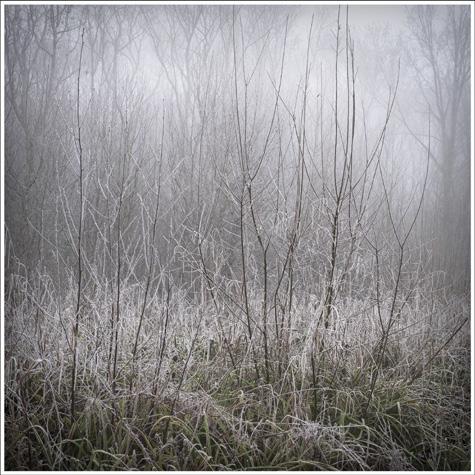

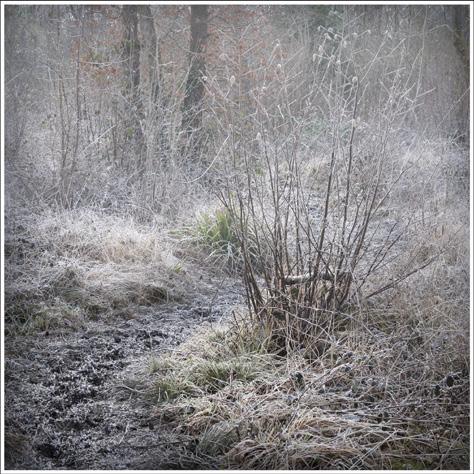
Statement of Intent - Landscape Fellowship - 13th May 2021
Tiddesley Wood is a 6,000-year-old ancient woodland near Pershore, close to where I live, previously owned by the Abbots of Pershore Abbey. It is currently in the hands of Worcestershire Wildlife Trust.
In winter, the frosts and mists transform it into a wonderland. I call it my happy place where, in a world of constant change and uncertainty, I can find solace by immersing myself amongst the trees as they stand majestic and patient. I like to capture those quiet, early morning moments when the mists create a timeless atmosphere, adding mystery to the woodland whilst the frosted carpet protects the dormant life under my feet.
I loved creating this body of work, which allows me to portray the calmness and beauty of my local woodland during the sometimes harsh and lonely winter months.
